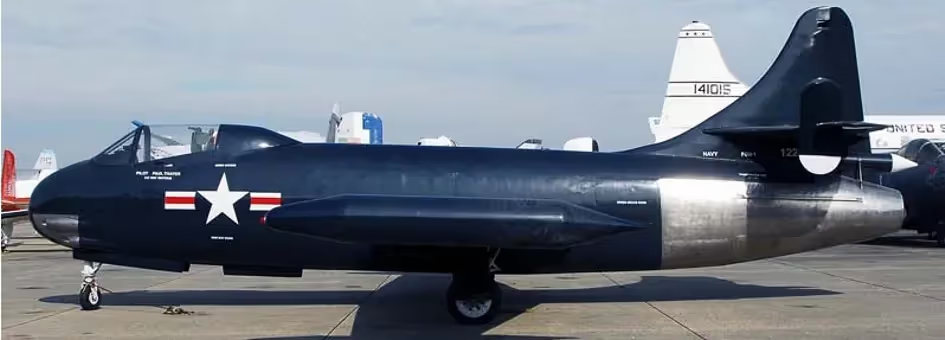Warplanes of the USA: Vought F6U Pirate
Vought F6U Pirate

(USN Photo/NMNA)
The first of three U.S. Navy Vought XF6U-1 Pirate prototypes (BuNo 33532) in flight over Edwards Air Force Base, California (USA). The XF6U-1 made its first flight on 2 October 1946. The first two prototypes were equipped with a Westinghouse J34-WE-22 turbojet engine without afterburner, making the plane severly underpowered. Flight testing revealed severe aerodynamic problems, mostly caused by the airfoil section and thickness of the wing. The vertical stabilizer also had to be redesigned to smooth out the airflow at the intersection of the horizontal and vertical stabilizers. Other changes included the addition of dive brakes on the sides of the fuselage and the replacement of the Metalite panels near the engine's exhaust with stainless steel one.
The Vought F6U Pirate was the Vought company's first jet fighter, designed for the United States Navy during the mid-1940s. Although pioneering the use of turbojet power as the first naval fighter with an afterburner and composite material construction, the aircraft proved to be underpowered and was judged unsuitable for combat. None were ever issued to operational squadrons and they were relegated to development, training, and test roles before they were withdrawn from service in 1950. (Wikipedia)

(USN Photo)
Vought F6U-1 Pirate (BuNo. 122481) from the Naval Air Test Center at Naval Air Station Patuxent River, Maryland, 1 Jan 1949.

(NMNA Photo)
This was the second production airplane and is the sole surviving aircraft of its type.

(USN Photo)
Vought F6U-1 Pirate (BuNo. 122533).

(USN Photo)
Vought F6U-1 Pirate (BuNo. 122491). Test aircraft.





